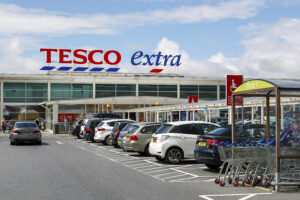
Britain’s top retailers brace for a steep rise in property tax bills as government reforms to the business rates system threaten to add £600 million in costs across the sector, with London’s West End and major supermarket chains among those worst affected.
According to analysis by property consultancy Colliers, changes due to come into effect from April 2026 will see the business rates burden disproportionately shifted onto larger commercial properties, especially those with a rateable value (RV) above £500,000. While the reforms are intended to support smaller high street businesses by lowering their tax multiplier, the Treasury plans to fund the cut by imposing higher rates on the most valuable retail, leisure, and hospitality properties.
John Webber, head of business rates at Colliers, criticised the new policy as “nuts”, warning that it unfairly targets the very businesses that underpin the high street economy. “At a time when our high streets are under immense pressure, and major retailers are facing increased employment costs from national insurance and minimum wage rises, the government’s decision to pile more tax onto anchor tenants is self-defeating,” he said.
Colliers’ estimates suggest that the UK’s largest shops will collectively face a £600 million rise in annual liabilities, on top of an existing £11 billion bill for 2025. Supermarkets are expected to bear the brunt, with more than 90 per cent of Tesco, Asda, and Sainsbury’s store portfolios expected to breach the £500,000 RV threshold. The grocery sector alone could face more than £350 million in additional costs each year, while the impact will likely ripple out to suppliers such as food manufacturers and producers.
The West End of London is forecast to be the single most heavily impacted region. Colliers expects that 335 retail properties in areas such as Knightsbridge will see their rateable values climb by around 30 per cent following the revaluation. With the business rates multiplier for high-value properties expected to reach 55p in the pound, annual liabilities for West End properties could surge from £212 million to £274 million. This equates to an average annual increase of more than £182,000 per property.
While the government insists the reforms will benefit the majority of smaller businesses, Webber warned that even those may not feel much relief. “Reliefs have already been cut back sharply and, for many, steep rateable value increases could wipe out any gains from the lower multiplier,” he said.
A Treasury spokesperson defended the reforms, describing them as a necessary step towards a “fairer and more sustainable” business rates system. “We are a pro-business government that is creating a fairer business rates system to protect the high street, support investment and level the playing field,” they said.
They


